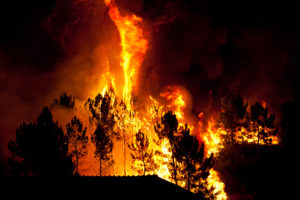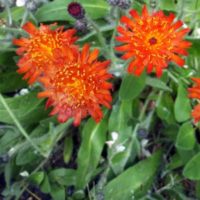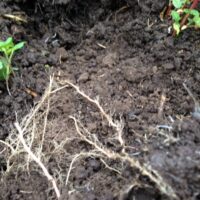Part of the beauty of the Pacific Northwest is the lush forested land that surrounds our homes and communities. This beauty is fragile, however, as we have learned first hand here in Clackamas County. We are already experiencing some unseasonably dry and hot weather. Be proactive and educate yourself on the steps you can take to make your home and property more fire resistant!
Attend a Free Wildfire Community Preparedness Event
Wildfire Preparedness Weekend: Explore art exhibits about local wildfires and meet experts to learn more about how you can prepare your home and family for wildfire season.
- When: May 20 & 21, 2023, 11:00 a.m. – 4:00 p.m.
- Where: World Forestry Center, 4033 SW Canyon Rd, Portland, OR
- Cost: Free
- Sponsor: Oregon Office of State Fire Marshal in partnership with Portland Fire & Rescue
- More Information

The Oregon State Fire Marshall is The OSFM is hosting a series of virtual webinars in May and June geared towards being prepared for wildfire. A list of the webinars offered and links to register are below. Click the name of the webinar to register!
- May 24: Noon – 1 p.m. | Emergency Preparedness
- May 31: Noon – 1 p.m. | Fire-resistant plants and flammable plants
- June 14: Noon – 1 p.m. | Public Safety Power Shut-off
- June 21: 12:30 p.m. – 1:30 p.m. | Fire Season Forecast
Clackamas Fire District Has Preparedness Handouts
Print up these handy guides to prepare yourself in the event that there is a wildfire in your area.
Reduce Fuels During Wildfire Awareness Month!
They say that “an ounce of prevention is worth a pound of cure.” Take steps to limit the effects of wildfire on your property.
Vegetation, dead or alive, that allows the fire to climb from the forest floor into the tree canopy is referred to as a ladder fuel. Common ladder fuels for wildfires include invasive weeds such as Himalayan blackberry, Scotch broom, and old man’s beard clematis. It is important to control ladder fuels on forest edges where the fire is often likely to start.
Here are some tips from Clackamas SWCD on how to control these invasive weeds this spring:
Himalayan blackberry (Rubus armeiacus)
Blackberry control can be a difficult task. Manual removal can be an effective control option, but it is labor intensive, often difficult, and will need regular follow-up. Manual removal may also cause extensive soil disturbance and may increase erosion. Follow recommendation to replant soon after disturbance.
Due to the difficulties associated with controlling Himalayan blackberry, herbicides are often a component in the management of this species. Carefully read and follow all directions on the manufacturer’s label when using a chemical.
Scotch broom (Cytisis scoparius)
Scotch broom control may also be a difficult task. This plant produces numerous seeds that have a hard coat allowing them to survive up to 30 years in the field. For easier removal, pull small plants when the soil is moist, usually between January and May. Manual removal often causes heavy soil disturbance and brings seeds to the surface creating a new generation of growth. Be diligent!
Mowing may also be used but must be repeated at regular intervals to exhaust the plant. Note that mowing equipment can transport seeds if not cleaned before leaving a site.
Old Man’s Beard (Clematis italba)
Old Man’s Beard is often found climbing in trees. To control it, separate the vines from the roots by cutting the vine several feet above the ground. Pull or dig all plant parts below your cut and dispose of plant parts to discourage resprouting. Herbicides may also be used, but follow all directions carefully on the manufacturer’s label. To avoid harming pollinators, spray before the plant blooms.
Watch Out For Nesting Birds and Wildlife
Remember to avoid major weed removal disturbances in the spring and early summer when native birds are nesting and other animals have young offspring.
For more detailed information on invasive weed control methods, visit our WeedWise website or call us at 503-210-6000.










